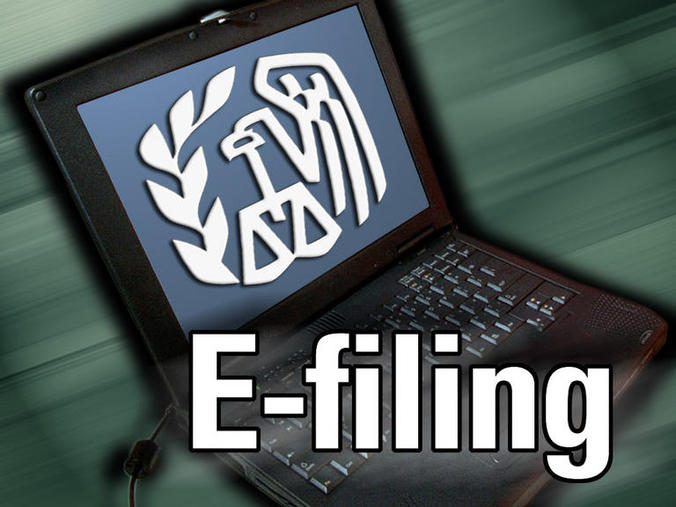Advisory
IRS to Go Where No Agency Has Gone Before
According to a new report by the Electronic Tax Administration Advisory Committee (ETAAC), the IRS has made significant strides on the electronic frontier, but the mission is far from complete.
Jul. 01, 2015

According to a new report by the Electronic Tax Administration Advisory Committee (ETAAC), the IRS has made significant strides on the electronic frontier, but the mission is far from complete. The report was presented in a public meeting with the IRS on June 25, presided over by Jim Buttonow, ETAAC Chairperson and Director—TRS: Tax Practice and Procedure at H&R Block.
“The IRS has made great progress in developing a long-term digital first strategy which includes development of online accounts and improving irs.gov.” Buttonow told CPA Practice Advisor. “Two years ago, the IRS did not have an enterprise wide strategy to bring digital first solutions to taxpayers and tax pros. Today, it is good news – the IRS has a plan to get there.”
The ETAAC was formed back in 1998 and charged with providing input to the IRS on the development and improvement of electronic tax administration. Pursuant to the 1998 law establishing the committee, the ETAAC is required to issue an annual report concerning progress on reaching the stated IRS’ goal of electronically receiving 80% of tax and information returns; legislative changes assisting in this goal; status of the IRS strategic plan for electronic tax administration; and effects of e-filing tax and information returns on small businesses and the self-employed.
The IRS ensures that ETAAC membership reflects broad experience and stakeholder perspectives, including representation from state departments of revenue, large tax preparation companies, solo tax practitioners, software companies and business filers from both the nonprofit and for-profit sectors.
“We appreciate the hard work these dedicated volunteers bring to electronic tax administration,” said IRS Commissioner John Koskinen in a prepared statement. “The members provide both practical and creative advice to the IRS as we study ways to improve our delivery of electronic services to taxpayers.”
The following four key summaries were outlined in the new 2015 report.
1. Progress on the 80% e-filing goal. In 2015, the report says the IRS approached a 90% e-file rate for individual returns, surpassing its 80% goal. Two other major types of business return, partnership and fiduciary returns now exceed an 80% e- file rate for the first time. The greatest room for e-file growth continues to be in employment tax returns (Form 94x series) and tax-exempt organization forms. Annually, the Form 94x series e-file rate has consistently experienced the slowest growth rate out of all major return types.
2.Progress on 2014 recommendations: The IRS has made progress on specific areas of focus in the 2014 ETAAC report. Specifically:
- The IRS continues to look to improve e-signature and authentication to fight tax identity theft. It recently formed a Security Summit tasked with addressing these challenges.
- The IRS has started developing strategies and a tentative five-year roadmap to improve the taxpayer and tax professional experience through one comprehensive online account. Buttonow cited this item as one of the key recommendations.
- The IRS has worked with the Department of Health and Human Services (HHS) to allow taxpayers who received advance payments of the Premium Tax Credit under the Affordable Care Act (ACA) to view the payment amounts before filing. Legislative proposals for the IRS to have correctable error authority could enhance its ability to proactively identify and correct ACA reporting errors on taxpayer returns.
- The IRS has made improvements to its Foreign Financial Institution (FFI) portal functionality and provided additional guidance on the registration process to improve compliance with the Foreign Account Tax Compliance Act (FATCA).
3. Future challenges on digital transformation: The IRS faces mounting challenges as it tackles reduced resources and staffing, as well as increased demand for its services. The nature of the demand is also changing because taxpayers increasingly prefer digital self-service to phone and paper methods. As a result, the IRS needs to transform its taxpayer service and compliance capabilities for efficiency through digital tools. While the IRS is planning for the development of digital tools, it needs to accelerate its strategy to overcome service shortfalls.
4. Recommendations for 2015: The ETAAC makes 15 recommendations that will drive four “key outcomes.”
Key outcome #1: Accelerated digital-first taxpayer service strategy that:
- Meets growing taxpayer demand for digital interaction;
- Is supported by key stakeholders; and
- Is prioritized to deliver measurable and cost-effective long-term improvements to taxpayer service and compliance.
Key outcome #2: Increased taxpayer preference for comprehensive and easy-to-use IRS digital service tools that will reduce burden, increase compliance and improve taxpayer service.
Key outcome #3: The IRS digital-first strategy advanced across the industry, through tax software providers and tax professionals, to decrease IRS and taxpayer burden and increase overall compliance.
Key outcome #4: Improved website experience that provides relevant and accurate information in a user-friendly format to support a digital-first taxpayer service strategy.
Obviously, there’s plenty of work that remains to be done. Is there an end in sight? Buttonow says that it depends.
“I am encouraged that Congress and the IRS will put aside current arguments and start focusing on increasing the level of service to taxpayers and their professionals. The business case is too strong for business as usual,” he commented. “I am also encouraged that the IRS is pushing forward with their digital strategy despite obstacles. As a Committee, we DID NOT advocate for the increased funding for the IRS – we recommended that Congress and the IRS work together on how to fund for a digital first taxpayer service strategy – that could mean either increased funding or reallocating of current resources to prioritize digital taxpayer and tax pro tools.”
